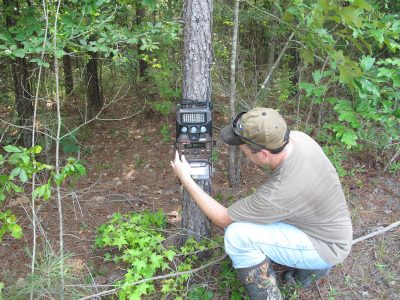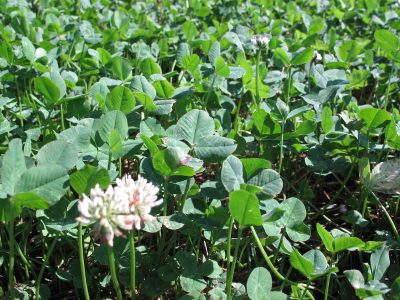
Early scouting can really put you ahead of the game, and identifying food sources is a great start. Brassicas, including turnips, are a great food source as the season’s first frosts hit.
SERIES
- Part 1: Top Four Tips To Scouting Now
- Part 2: Early Season Deer Stand Tips
- Part 3: Follow the Moon
- Part 4: Five Top Deer Gear Essentials
- Part 5: Five Top Backpacks
- Part 6: Essential Trail Camera Know-How
- Part 7: Making The Call
- Part 8: Keeping Warm
That late summer heat may still be scorching the Earth and with it, your enthusiasm to spend much time outside, but the nation’s first deer seasons are mere weeks away. Even if your first opportunity to draw a bow or pull a trigger isn’t for another couple of months off where you live or hunt, now is the time you need to get in gear so when opening day rolls around, you can make the most of that opportunity. Following are four tips to help you start the 2016-17 deer season off right.
1.) Walk Your Hunting Land
It doesn’t matter if you hunt the same 40 acres or 4,000 acres every year, put on a pair of boots, spray down with bug repellant and avoid the poison ivy. It’s time to walk the trails, bottoms, field edges and wooded hillsides to identify what has changed. A lot can happen from year to year; trails that you will need to use to silently slip in close to bedding cover become overgrown or blocked by downed trees. Cut and clear these trails well before the season so you won’t blow deer out right before you are about to hunt them. Check creeks and water holes. If the summer has been a dry one (and this year with all of this late summer high heat, it is turning into one) once dependable water sources that deer use for drinking or to travel along may not be the magnet they once were. That favorite tree stand may have fallen down or a strap may have broken on it. Check all of your stands out and fix them now.
Key to walking the land is to identify new food sources, eyeball deer-attracting crops planted on the property (if in an agricultural area) and pinpoint well-worn deer trails and bedding areas. Speaking of bedding cover…
2.) Find New Bedding Areas

Find isolated water holes, particularly with worn trails leading to and away from them and tracks in the soft muddy edges, and then hang your stand where it affords a shot to the water’s edge.
As famed hunter Michael Waddell once said, “…the entire South is a bedding area.” It’s not far from the truth. But the fact is, whether you live in the South, Northeast, Midwest or the whitetails’ more western haunts, the fact is, every area will hold preferred bedding locations that provide whitetails with secure cover in which to hide. It will also typically be located near food and provide instant escape routes.
Remember, the forest is dynamic. It changes every year. Recently cut areas with new, abundant sunlight grow thick. At the same time, more established woodlands or pine plantations open up as the perpetual shade suppresses the understory. Areas that held deer last year may not hold them this year. It’s critical to identify these new spots and understand their proximity to current food sources.

You can’t be out there all the time. Ask landowners or people who live on or near the land you hunt what deer they have been seeing and when they have been seeing them.
During your scouting walks, tote an aerial photo or GPS unit and notate areas with newly fallen trees. I once jumped two 10-point bucks from the top of a fallen oak, which now makes me always eyeball these impromptu hides for big deer. Additionally, mark areas that have been cut but have grown up suddenly over the past summer or two to provide low cover for deer to bed in, but isn’t so grown up that you can’t spot them moving through that brush when on their feet. Bucks will work the edges of these areas during the rut, trying to intercept the scent of a receptive doe bedded in the cover. Hunting inside the tree line on the downwind side of these areas can provide numerous buck sightings as the rut really ramps up.
3.) ID Your Key Food Sources
Deer are voracious eaters, particularly in the early season, when bucks are preparing for the rigors of the rut and does preparing for the lean winter months. Agricultural fields are the obvious sources to identify—and not just on your land, but on neighboring properties as, which can pull deer through and from your property. Soybeans are ideal, as deer relish the beans and greenery that is not so tall that it will hide them like corn, also a whitetail favorite. Deer will also browse among peanuts, milo, peas and until it is sprayed, even the green leaves on cotton plants.
[one_half]
[/one_half]
[one_half_last]

Even before the first frost sweeten their taste, don’t ignore plots with brassicas early in the season. Deer will still nibble the leaves.
[/one_half_last]
Food plots of clover, winter peas, oats and chicory can be key attractors for deer, particularly in heavy pine areas where mast trees are in relatively short supply and during the early season. As the weather cools, mustard, turnips and other brassicas sweeten and draw deer in droves if hunting pressure is kept to a minimum.
But king among deer is mast, particularly in the way of acorns. One of the key reasons hunters sometimes don’t see many deer in fields or food plots is when acorns are dropping. Deer can feed on this protein-rich food while remaining hidden in the woods, and white oak acorns are among their faves. Keep in mind, however, oak trees don’t produce acorns every year, and in some years, some trees will produce while others don’t. Identify which trees are dropping, especially in years where not all of them are, and you may have just nailed down your own private deer hot spot.
4.) Camera Up
Hopefully you own a few trail cameras (or more depending on how much land you hunt). Now’s the time to get them hung up, or, if like me you occasionally forget one in a spot from last season, find it, clean it up, replace batteries and memory cards and get it back on a tree. Before hanging them up, test them in your yard, both during the day and the night, to ensure they are still triggering, how far they are triggering and compare images taken. Got a cam where you are getting a lot of deer rumps or legs as they step out of frame? Then you need a quicker camera!
Hang cameras on plots or near feeders (where feeders are legal) or along well-worn deer trails entering the edge of ag fields. If you find a nice oak flat with abundant oaks on the ground and the leaves disturbed from browsing deer, hang a camera in this area to determine when and how often deer are hitting the area. Natural funnels, such as a low spot in a wire fence, are also great spots to hang cameras and begin your photo inventory of the local deer.
There’s a lot you can do to get this year’s deer season officially underway, but follow these four tips and you could well be off to your best season ever.
[one_third]

Acorns are one of the biggest draws for deer when available. Find a tree dropping oaks and you have found a hunting hot spot.
[/one_third]
[two_third_last]

Don’t bust the woods up yet. Glass from a distance in the pre-season, even staying near the truck and at a good, concealed distance when deer are already out feeding.
[/two_third_last]
[one_half]

Trail cameras are a great tool for inventorying the bucks on your land. Hang near a key food source or attractant or bait pile where legal.
[/one_half]
[one_half_last]
[/one_half_last]


